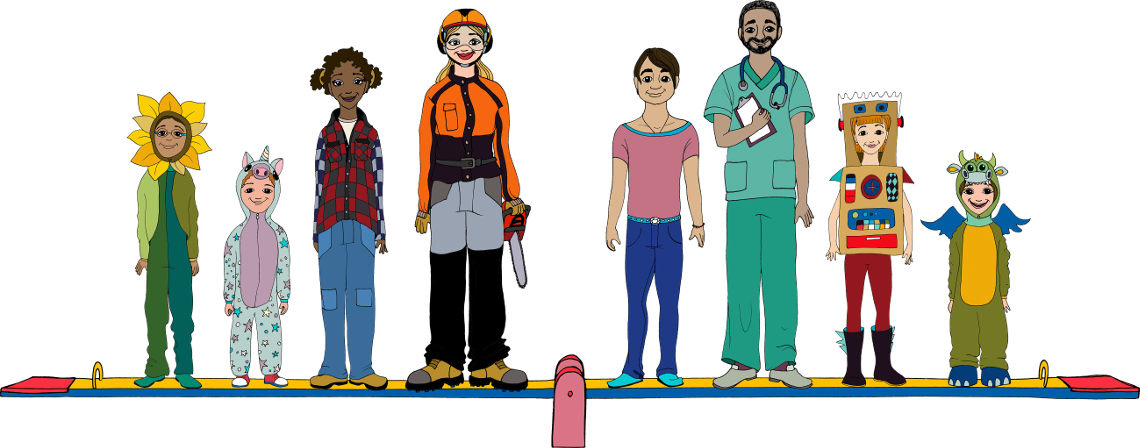Goals

Brief description of the issue
It is possible that a child doesn’t identify with the gender he or she has been assigned at birth. When a child has behaviours and habits that aren’t necessarily aligned with the gender he or she has been assigned to at birth, the look of other children can be harmful and self-esteem levels can drop. Other children can then express loud and clear their discomfort as well as a certain form of intolerance towards the child they see as different and non-conforming (Roy, 2018, p. 7). Putting in place an education that isn’t focused on gender stereotypes can tackle detrimental prejudices for children who are transgender, gender nonconforming or who suffer gender dysphoria.
The Jasmin Roy Foundation put in place multiple resources (guides and videos) to help people working in early childhood create an inclusive and welcoming space for all children, regardless of their gender identity. You can access these resources by clicking on the links below, but you can also download the documents and watch the videos further down this page.
- Social and emotional learning to help children with the process of identity affirmation [videos]
- Social and emotional learning to help children with the process of identity affirmation
- Inform children during the early childhood period on issues related to gender, gender identity and gender expression
- Supporting children’s awareness during early childhood to explore, understand and accept gender diversity, gender identity and gender expression
Julien’ story
Invite children to meet Julien and hear his story. Questions and reflection activies are proposed with the videos.
Julia is sad
- What allowed Julien to feel better?
- When we share our needs clearly, it is easier for others to meet them!
- It is possible that a friend doesn’t feel like a boy or a girl even if he or she is perceived likewise. What can we do in those situations to help our friend feel better?
The heart that knows everything
Sing the song with the kids. Ask them how they feel in their heart.
Toys are toys
Invite children to play with a toy they don’t usually play with. Ask them if they’ve had fun in doing so!
A child that doesn’t identify with the gender he or she has been assigned at birth can face mockery or misunderstanding from other children. It is important to take the time of explaining children that boys can feel as girls and vice versa, that we must not laugh at others because they are different from us. With gender nonconforming children, it is important to show empathy, understanding, to ask them regularly how they feel and to use the pronouns associated with the gender they identify with.
For Parents
Supporting a child in the development of his or her gender identity, especially when the child is nonconforming or hesitating, can be difficult for parents. Here is a link to a great article by the Canadian Paediatric Society on gender identity that can guide parents through this sometimes tricky process.
Documents
References
ROY, Jasmin (2018). Les apprentissages sociaux et émotionnels au service des enfants en processus d’affirmation identitaire, Fondation Jasmin Roy, retrieved on November 30th, 2018, accessible at: https://fondationjasminroy.com/initiative/accompagner-lenfant-pendant-la-periode-de-petite-enfance-sur-les-questions-liees-au-genre-a-lidentite-de-genre-et-a-lexpression-de-genre/
